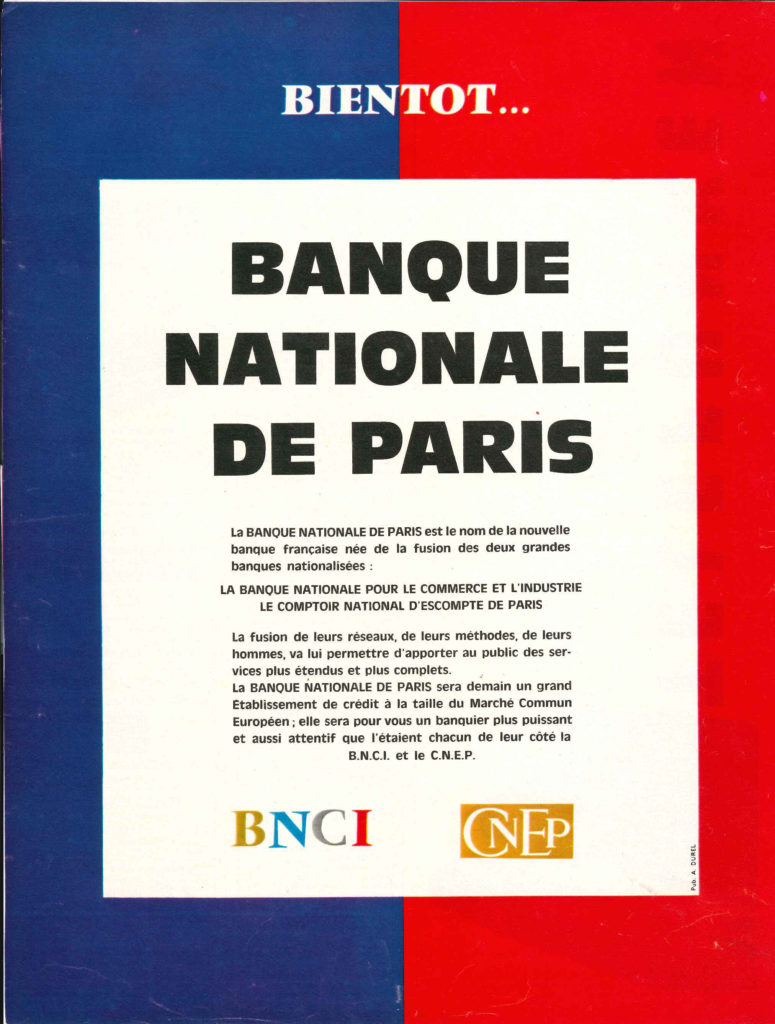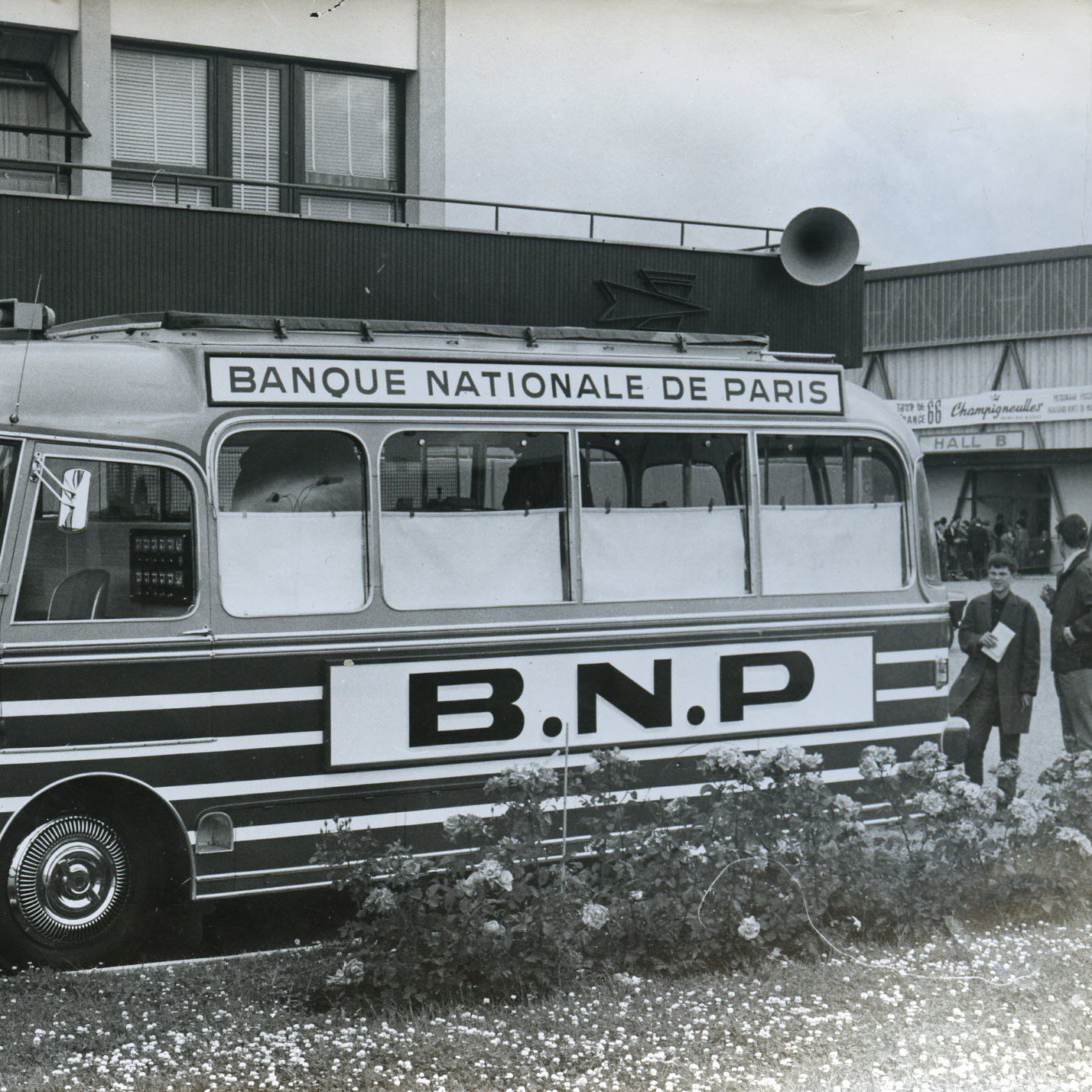BNP, birth of a leader

BNP Paribas Historical Archives
As the number one deposit-taking bank in France, BNP was determined to make banking a mass market business, placing the emphasis on the bank-customer relationship.
The origins of BNP
On 4 May 1966, the French Ministry of Finance announced that Banque Nationale pour le Commerce et l’Industrie (BNCI) and Comptoir National d’Escompte de Paris (CNEP) were to be merged into a new financial institution called Banque Nationale de Paris (BNP). The merger took place against a background of banking sector reforms and mergers initiated by Finance Minister Michel Debré.
The choice of the name ‘Banque Nationale de Paris’ summed up the scope and objectives of the merger, which was designed to create a modern bank serving the national economy, whose influence would in turn enhance the position of Paris in the international financial world.

CNEP Chairman Henry Bizot was appointed Chairman of the new bank, while the ex-BNCI Managing Director, Pierre Ledoux, became Managing Director of Banque Nationale de Paris. BNP set up its headquarters in the BNCI premises at boulevard des Italiens in Paris.
With the merger, BNP became the number one French bank, number two in Europe and number seven worldwide on balance sheet total. The merged bank had strong positions abroad and vis-à-vis industry. Despite having to devote the first few years to streamlining the branch network and the overall organisation, BNP remained a dynamic commercial enterprise at a time when huge sections of French society were just starting to open a bank account for the first time. Three years after the merger, it was declared a great success.
BNP “likes talking money”
In the spring of 1973, on all mass media, in the press, on hoardings in the street, and on television appeared a figure who confided to the French people with a little smile: “Quite frankly, I’m interested in your money.” This campaign, which really caused a stir – even shock – in a country unused to speaking openly about money, was aimed directly at people who did not yet have a bank account, with the aim of giving banking mass-market appeal. The advertising campaign stressed the idea of partnership and shared interests between the banker and his customer. It came at a time when banking activity was booming and more and more people were opening accounts. In eight years, the number of accounts opened at BNP more than doubled, rising from 2 million in 1966 to 4.5 million in 1974.

BNP continued to expand to the four corners of the globe. In Europe, it partnered with seven other banks, among them Dresdner Bank, to form the ABECOR club. In 1979, under the chairmanship of Jacques Calvet, BNP strengthened its presence in North America, when it acquired a 100% stake in Bank of the West, which was then merged with an existing BNP subsidiary, the French Bank of California.
Private banking
René Thomas, who took over as BNP Chairman in 1982, succeeded in steering the bank unscathed through the crisis of the early 1990s, which hit the real-estate sector especially hard. When he left the bank in 1993, he recommended to the authorities that Michel Pébereau should succeed him and Pébereau duly took the helm of BNP in July 1993. He immediately began preparing for the privatisation decreed by a law passed on 19 July 1993. Within 10 days 2.8 million people bought shares in the newly-privatised financial institution, 1.6 million of whom were Bank customers. Michel Pébereau kept the various teams in place, but reorganised and then developed BNP in a very determined manner. From 1993 to 1998, the bank grew its net profits sevenfold and became the number one French bank in terms of profitability.
In 1999, BNP launched a takeover bid for Paribas, which led to the merger of the two banks on 23 May 2000 and the formation of the BNP Paribas Group.
Partager cette page









